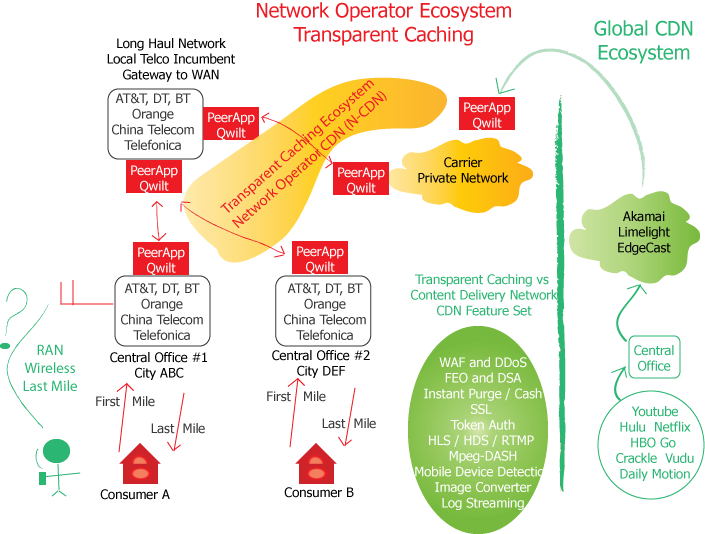The transparent caching industry is alive and doing well. According to Frost & Sullivan, the market is set to grow to $350M by 2016. Qwilt and PeerApp are the pure-play companies in the industry. PeerApp declares itself a leader in the niche and they have 450 deployments to date. They have developed a range of products that can scale from 1Gbps to 150Gbps in a single system. The target market for their transparent caching solutions are ISP’s, Cable Operators, Network Operators, Mobile Operators, and even large enterprises like the trucking company Conway. Transparent caching is very similar to OnApp in that they are simply a CDN-in-a-box without all the bells and whistles.
The use of transparent caching systems make a lot of sense in some segments like mid-size ISP’s, large enterprises, and in some cases cable operators. In many regions like the US, networks are congested with Netflix and Youtube type content. Transparent caching solutions are ideal for caching this type of VOD content. However, when it comes to Network Operators, especially the Tier 1 carriers like AT&T, DT, BT, Orange, China Telecom, and Telefonica, transparent caching systems are not the best fit. Aside from the complexity of rights management that Network Operators must deal with, the technology within transparent caching systems are far too simplistic to handle the complex demands of live streaming, VOD, small file delivery, large file delivery, wireless last mile acceleration, and so on.
Now throw in that fact that content must be delivered to millions of last mile consumers, and it’s easy to see why CDNs are the best fit from a technology standpoint. Compared to the traditional CDN, transparent caching systems have about 15%-20% of the CDN feature set. In addition, transparent caching systems doesn’t address the challenges of wireless last mile content acceleration, where content is delivered to mobile devices within the (RAN). For those Network Operators that have decided to build their own internal CDN, as opposed to using Akamai, they are referred to as Network Operator CDN (N-CDN).


